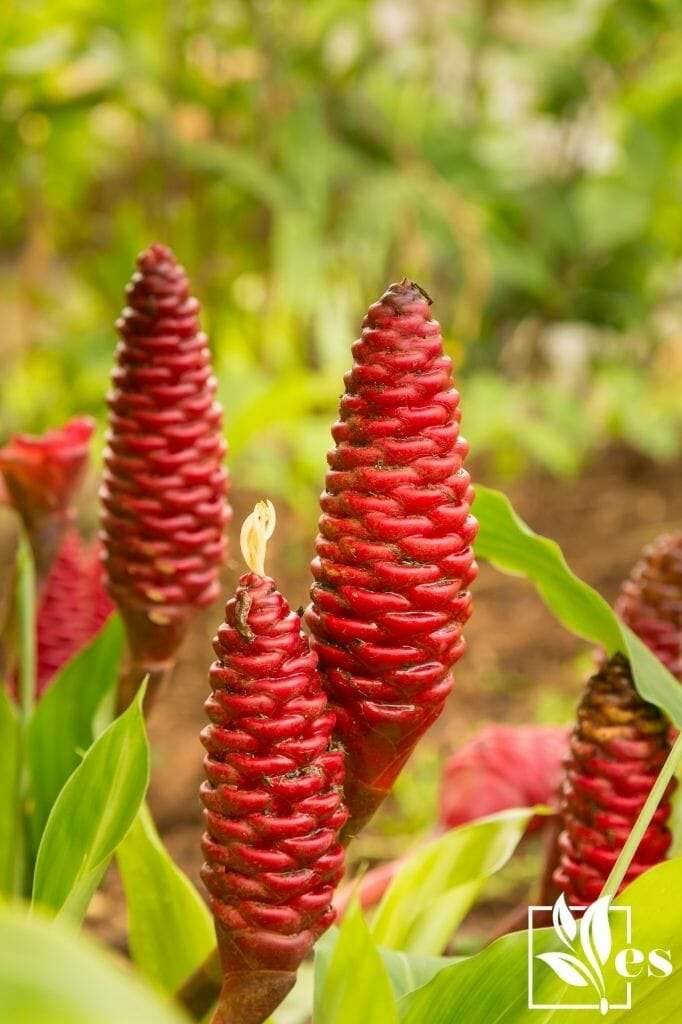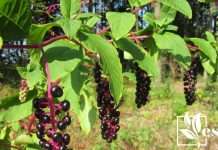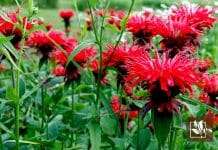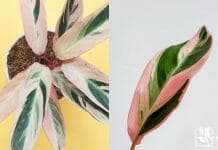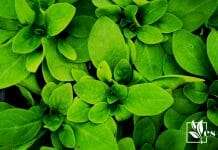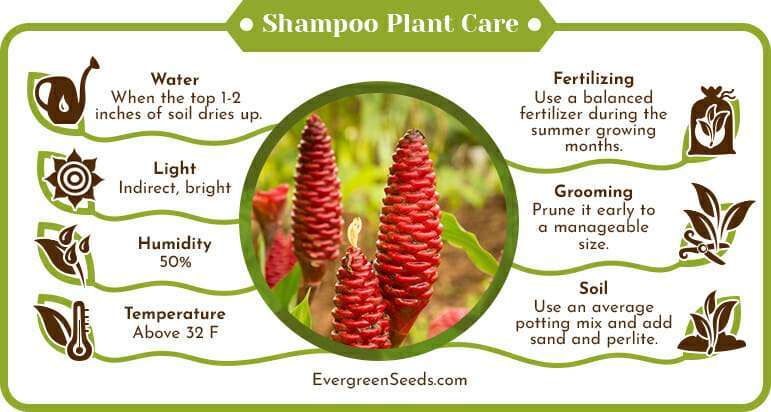
Shampoo plant of the Zingiberaceae family, also called zingiber zerumbet, is a gorgeous variety of the common ginger plant. Not only are the shampoo plant benefits numerous, but its pine cone shape also makes it an eye-catching houseplant.
Learn the best way to look after this Zingiber genus plant in the complete guide below.
JUMP TO TOPIC
What Is Shampoo Plant?
Shampoo plant is a herbaceous perennial plant native to tropical Asia and Australia with a unique pinecone shape. It is also known as the zingiber zerumbet, shampoo ginger lily, or the shampoo ginger plant. It is a small, clump-forming plant that grows up to become 3 to 5 inches tall.
Shampoo Plant Care
The care needs of the shampoo ginger plant include partial bright light, watering every week, and temperatures above 32 degrees Fahrenheit. Also, fertilize every month during the growing season.
Aside from the shampoo plant hawaii, the Alpinia Zerumbet or shell ginger and the Zingiber Officinale, or the common household ginger, are two other ginger plant varieties worth growing.
 Light Requirements
Light Requirements
Your ginger plant thrives best under indirect bright or fading intense light. Direct sunlight might not be well tolerated by it. Below are some things you should keep in mind while selecting the right location for this plant.
 It is best to grow this plant indoors. Choose a room in the house with windows.
It is best to grow this plant indoors. Choose a room in the house with windows.- A southern-facing window receives the most intense sunlight. Keep the pot at least three meters away from this window.
- The eastern and the western-facing windows are safer, so your plant can be placed near them. This is because they receive direct sunlight only for a brief amount of time in the morning and evening.
- The northern-facing window is not adequate enough. In a room with low light, you should install artificial grow lights for plants. They need to be turned on for at least 12 hours each day.
- When placed outdoors, make sure they are shaded but not completely in the shade.
 Water Requirements
Water Requirements
Water your pine cone ginger every seven days using distilled water. Find out answers to more questions regarding watering here.
– When To Water Your Plant
When the top one to two inches of soil dries up, know that it is time to water your plant. You can put a stick or pencil in the soil to find out if it is dry or not. A moisture meter is an instrument that accurately tells you how moist the soil is. Ideally, you should water this plant once every seven days in the summer.
– How To Water Your Ginger Plants
Here are some tips for watering your plant:
- Always water the soil and not the leaves of the plant. Doing so will predispose your plant to develop fungal infections.
- Use a moderate amount of water each time. An average estimate is to use 1 cup of water per week.
- Pour slowly. Make sure that it soaks through the soil completely.
- Any extra water that drains out of the pot should be collected in a saucer. Don’t forget to drain this saucer out as well.
– What Is The Most Suitable Water for These Plants?
The safest type of water for these plants is distilled water or filtered tap water. It doesn’t contain the usual minerals, chemicals and toxins that are present in municipal tap water. Rainwater is also a healthy alternative.
Send a sample of your tap water to a nearby laboratory and they will send a detailed report back to you. If the report says it is safe, you can use it to water your plant.
 Soil Requirements
Soil Requirements
Your live plant needs soil that drains well and is also loose and airy. Take an average potting mix, then add sand and perlite to it. This will increase air circulation and water drainage.
During summer, keep your soil moist most of the time. Since you also don’t want to overwater the plant, try covering the soil with a layer of mulching material.
 Temperature Requirements
Temperature Requirements
The zingiber zerumbet plant grows under relatively low temperatures. Maintain temperatures above 32 degrees Fahrenheit. This plant is not frost-hardy, so if the temperature falls below this, your plant might go into transplant shock.
– Winter
Here are some steps you can take to keep your plant safe during the cold winter months:
- Move your plant indoors during wintertime
- Indoors, keep it away from cold air from vents
- Don’t keep the windows open at night, even during the summertime
 Humidity Requirements
Humidity Requirements
Maintain at least 50 percent humidity levels around these plants. Use a humidity tray by placing it under the pot. You can also mist the plant every three days to improve the air moisture content around it.
 Fertilizing Requirements
Fertilizing Requirements
Fertilize with a balanced fertilizer during the summer growing months. Fertilizing once a month should be enough. Stop feeding during the winter dormancy period, then at the end of the dormancy period, provide a phosphorus-rich fertilizer to promote the growth of rhizomes.
 Pruning
Pruning
This is a fast-growing plant. Don’t forget to prune it on a yearly basis to a manageable size. In addition, prune off all the old and diseased leaves and stem parts.
Propagation
Propagate your pinecone ginger by either dividing its rhizomes or germinating its seeds.
Learn the details of both processes below.
– Rhizomes
Here is how you can propagate through rhizomes:
- The most successful method of propagating this plant is via shampoo ginger rhizomes. For this, you must repot the plant first.
- Take the plant out of its pot and observe its root system. You will notice that it is made up of several rhizomes with multiple buds and stems growing out of them.
- Take a knife and cut individual rhizomes off. Each rhizome should preferably have multiple buds attached to it.
- Allow the rhizomes to dry for several days and form calluses in a dark, dry place.
- Before repotting, soak them in a clean water container overnight.
- Now take a pot and fill it with equal parts soil and compost. Bury these rhizomes one inch deep into it.
- Take the pot somewhere warm, humid and bright. Keep the soil moist for the first couple of days and fertilize every week with diluted fertilizer.
– Seeds
Here is how you can propagate through seeds:
- Obtain authentic shampoo plant seeds from a reliable source.
- Soak these seeds in clean, filtered water overnight. They will swell up a bit.
- Now take a shallow seedling tray and fill it with the nutrition medium of your choice. We recommend simply going for a store-bought one.
- Bury the seeds one by one in this medium using very gentle pressure. Make sure that the distance between each seed is at least one to one and a half inches.
- Move the tray to the warmest and most humid area within your house. You can cover it to increase humidity. Keep the medium moist all the time during the first few weeks.
- In a couple of weeks, your seeds will germinate, but it will be one to two months before they can be transplanted into a pot.
Problems
The zingiber zerumbet plant suffers from two main problems: pests and root rot. Find out how to solve both of these here.
– Pests
Mealybugs are the most common pests of the pinecone ginger houseplant.
Learn how to identify and get rid of them here.
– Mealybugs
Mealybugs are white, cotton-like pests. They can be seen moving around the plant, and their special hiding place is under the leaves.
A visible sign of a mealybug attack is when the leaves of the plant will begin to show yellow-colored spots. The upper side of the leaf will also be seen covered by honeydew. This is a sticky substance secreted by mealybugs. Often, you will be able to see puncture marks on the leaves as well
Get rid of these pests by washing the plant with water and soap. Apply neem oil and spray with a good-quality insecticide.
– Root Rot
Root rot is a fungal infection that occurs due to waterlogging. It can destroy a plant within weeks, and its treatments are debridement and fungicidal spray. Learn how to deal with it below.
– Symptoms
Here are the signs and symptoms to watch out for:
- A rotten smell will begin to come from your plant.
- Leaves will begin to turn yellow and swollen with water.
- Brown or black rot spots will appear all over the leaves.
- In severe cases, your plant will begin to experience an alarming leaf drop.
– Causes
What are the factors that cause root rot? Here are some of the most common ones:
- Not allowing the soil to dry sufficiently enough before watering again is the number one cause of root rot.
- A pot that has a very small drainage hole will not allow the water to drain out properly, causing this infection.
- The third main cause is a soil or potting mix that is too compact.
– Treatment
Here is what you need to do:
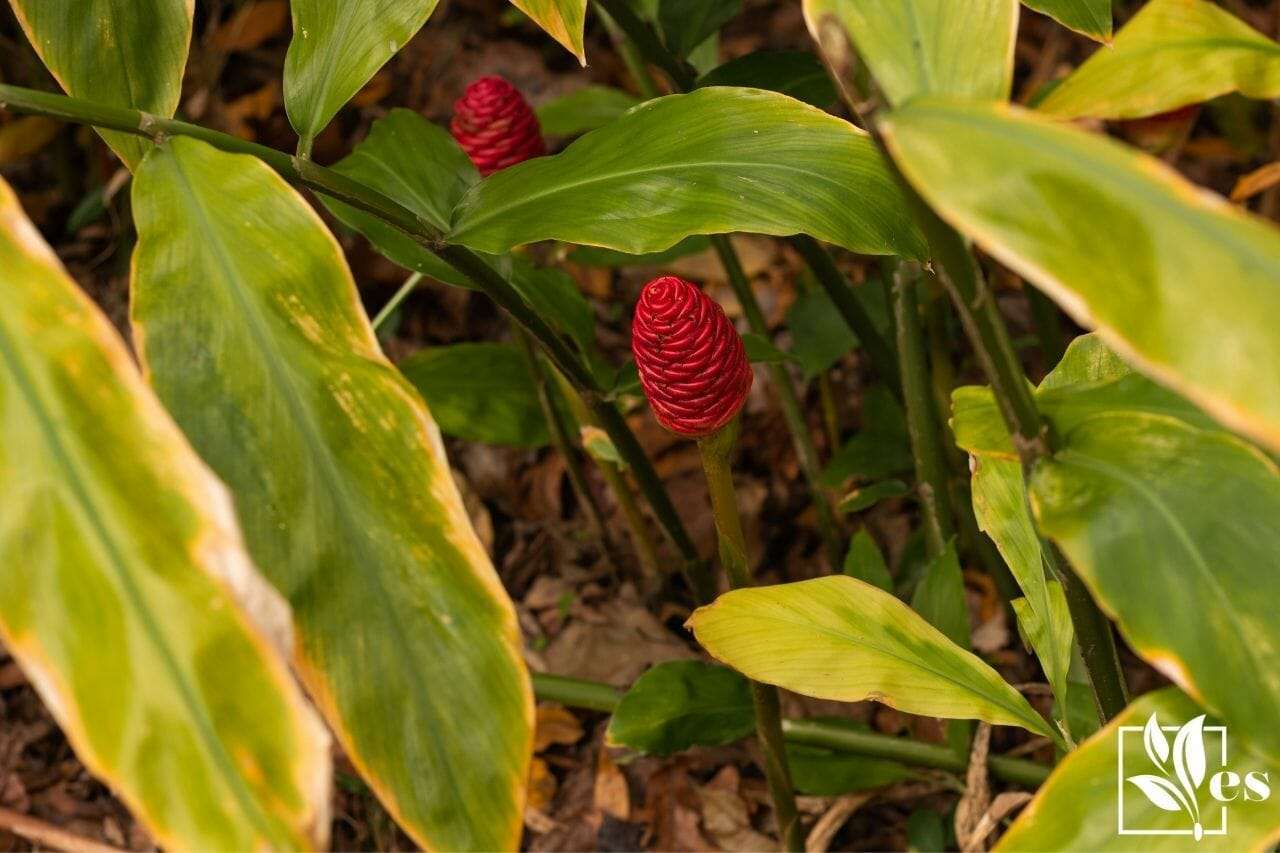
- Take the plant out of the pot and discard the old soil along with the pot. You cannot even recycle them as they are infectious.
- Take a sharp knife and cut off all the rotten parts of the plant. This includes roots, leaves and stems. If the majority of the plant is rotten, then you will have no choice but to say goodbye to the plant.
- Repot the remaining plant in new soil and a new pot. Make sure that this time there is no overwatering or water retention.
- Keep spraying a copper-based spray for several weeks to kill all fungal spores.


